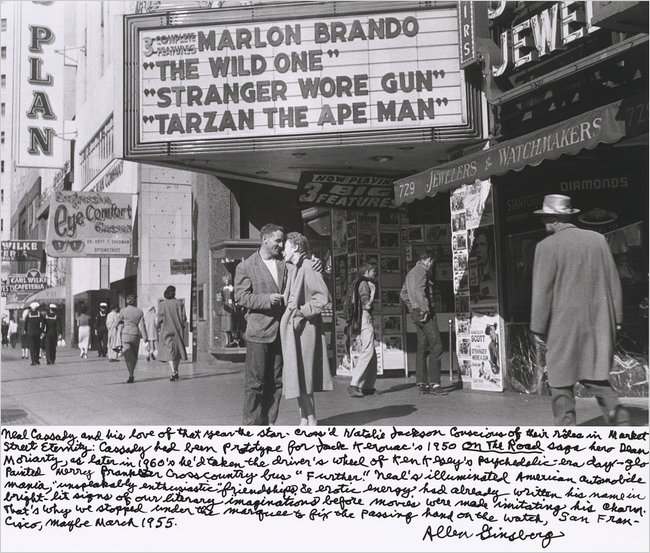Subscribe to ShahidulNews
By?HOLLAND COTTER
Published: September 12, 2010
WASHINGTON ? The poet?Allen Ginsberg, who died in 1997, adored life, feared death and craved fame. These obsessions seemed to have kept him, despite his practice of Buddhist meditation, from sitting still for long. He was constantly writing, teaching, traveling, networking, chasing lovers, sampling drugs, pushing political causes and promoting the work of writer friends.
?Beat Memories: The Photographs of Allen Ginsberg?: Neal Cassady and Natalie Jackson in San Francisco, in the show at the National Gallery of Art in Washington.?More Photos ?
Multimedia
In the early 1950s he began to photograph these friends in casual snapshots, meant to be little more than souvenirs of a shared time and ethos. Years later his picture taking ? often of the same friends, now battered by life or approaching death ? became more formal and artful, as if he were trying to freeze his subjects? faces and energies, and to show off his photographic skills, for the history books.
Nearly 80 pictures, early and late, many with handwritten inscriptions, are on view through Thursday in ?Beat Memories: The Photographs of Allen Ginsberg? at theNational Gallery of Art here. Some are familiar; others rarely seen. As arranged by Sarah Greenough, the senior curator in the museum?s department of photographs, they form a continuous narrative. In the space of two small galleries we watch legends take shape, beauties fade, an American era come and go.
Ginsberg began his photographic chronicle of what would become the Beat generation in earnest in 1953, when he was in his late 20s and living on the Lower East Side of Manhattan. He had known the group?s crucial personalities ??William S. Burroughs, Gregory Corso,?Jack Kerouac and their communal muse Neal Cassady ? since his student days at Columbia. He regarded them collectively, himself very much included, as a new literary vanguard. The work they were doing in the early ?50s seemed to confirm his faith. And his early pictures, taken with a secondhand Kodak, project a buoyant confidence.
We see figures who would soon enough become cultural monuments still vital and mercurial. In one much-published picture Kerouac, smoking and brooding, is already a romantic hero, but in another he?s a mugging cut-up on an East Village street ?making a?Dostoyevsky mad-face,? to quote Ginsberg?s caption.
Nearly 80 pictures, early and late, many with handwritten inscriptions, are on view through Thursday in ?Beat Memories: The Photographs of Allen Ginsberg? at theNational Gallery of Art here. Some are familiar; others rarely seen. As arranged by Sarah Greenough, the senior curator in the museum?s department of photographs, they form a continuous narrative. In the space of two small galleries we watch legends take shape, beauties fade, an American era come and go.
Ginsberg began his photographic chronicle of what would become the Beat generation in earnest in 1953, when he was in his late 20s and living on the Lower East Side of Manhattan. He had known the group?s crucial personalities ??William S. Burroughs, Gregory Corso,?Jack Kerouac and their communal muse Neal Cassady ? since his student days at Columbia. He regarded them collectively, himself very much included, as a new literary vanguard. The work they were doing in the early ?50s seemed to confirm his faith. And his early pictures, taken with a secondhand Kodak, project a buoyant confidence.
We see figures who would soon enough become cultural monuments still vital and mercurial. In one much-published picture Kerouac, smoking and brooding, is already a romantic hero, but in another he?s a mugging cut-up on an East Village street ?making a?Dostoyevsky mad-face,? to quote Ginsberg?s caption.

 Slide Show
Slide Show